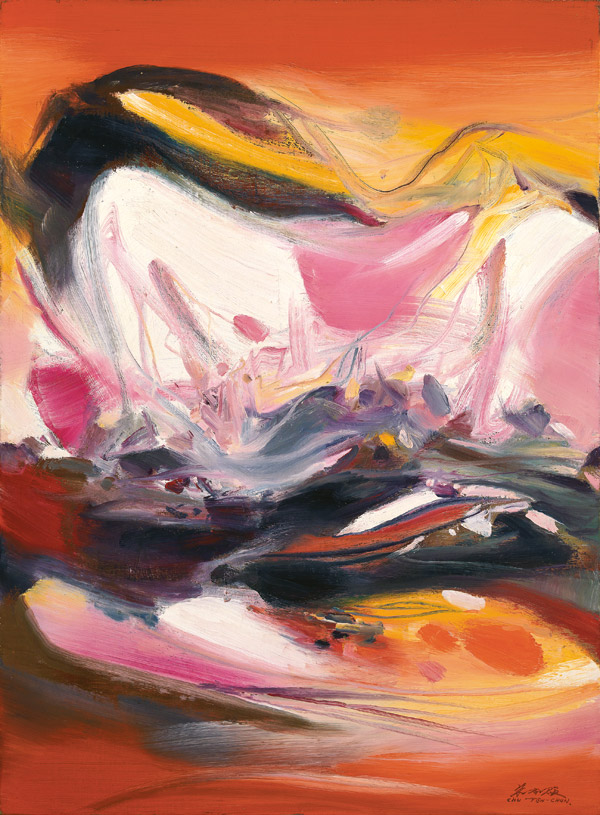PROVENANCE:
Collection of UMC, Taipei
ILLUSTRATED:
Impressions Classics IX: Chu Teh-chun, Impressions Art Gallery, Taipei, 2005, color illustrated, no. 6, p. 28
Solo Exhibition of Chu Teh-Chun, The Ueno Royal Museum (catalogue), Tokyo; Thin Chang Corporation, Taipei, 2007, color illustrated, p. 167
Catalogue Note:
"Composition No. 538" is a work that Chu Teh-chun created in 1974. At this stage in the evolution of his artistic style, Chu Teh-chun had moved away from the hard, angular use of line that characterized his earlier work, towards a freer, more relaxed style of brushwork. Employing the fei bai ("flying white") technique of traditional Chinese painting, Chu created a layered, gradation effect of color tone variation. Used in combination with the thick application of oils, this produced a sense of contrast in the texture of the canvas, an alternation between the "virtual" and the "real" Another change in Chu's style by this period was a greater willingness to use bold, bright colors. Works from this period often make extensive use of reds, yellows, browns and black, with a patchwork of flat patches of color laid on with sweeping brushstrokes. The interleaving lines on the canvas seem to dance and flow, creating a sense of spatial depth and of immense power.
Whereas Chu Teh-chun's early paintings had been characterized by a restrained, somber use of color tone variation, in the late 1960s Chu was inspired by the way Rembrandt used rays of light in his work. This inspiration is reflected in the composition of Chu's paintings from the late 1960s and onwards, in terms of how he combines bright and dark. These paintings feature large, bright patches of pink and white built up by applying one layer on top of another; positioned between the dynamic, linear brushstrokes, these patches function as "light sources," and also as conceptual space, while at the same time and providing a visual space in which the eye can "rest" amidst the interplay of bright colors. In "Composition No. 538", we can see the evolution of Chu Teh-chun's artistic style, as he gradually moves away from solid, restrained compositions towards vibrant, rhythmic paintings with a bright, cheerful atmosphere, a poetic sense of emotional release, and a free-flowing exploration of natural images. Overall, this is one of the finest examples of Chu Teh-chun's work from the 1970s.
